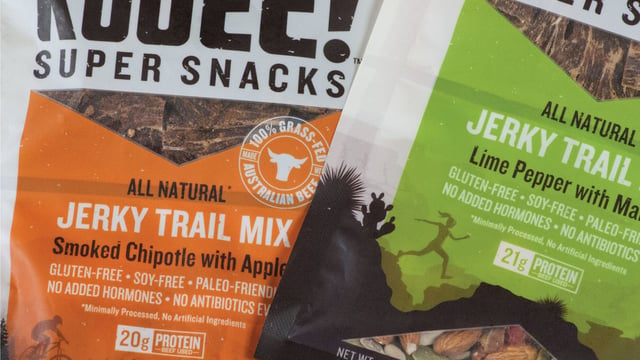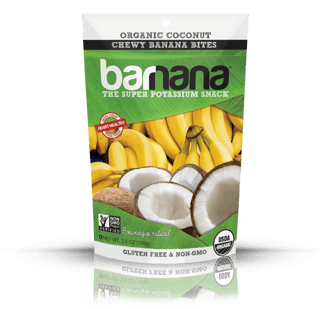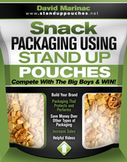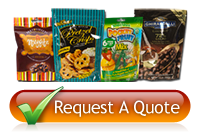
As we ease into the new year, many of us are setting goals and resolutions to make 2016 a year of growth and progress.
These aren't just personal resolutions we are making as individuals — a new year means a fresh start for businesses across the globe, and many are setting plans in motion to fine tune their product lines and meet the changing needs of today's forward-thinking consumer.
A large number of today’s leading CPG brands are already adopting flexible packaging solutions for their food and drink product lines as a key way to boost sustainability initiatives and reach key consumer demographics in the new year. This switch has been prompted primarily by evolving habits and demands, as shoppers adopt more environmentally friendly lifestyles and seek out products that fit in to their more sustainable ways of life. Millennials, especially, are driving new innovations in the way products are protected and presented.
Packaged Facts published a report, “Food and Beverage Packaging Innovation in the U.S.: Consumer Perspectives,” outlining several key trends prompting changes to the traditional ways food and beverages have been packaged. The report illustrates how brands will ultimately benefit from the evolution of product packaging, and five key points outlined in the document are explained below.
1. Packaging Will Be Designed to Target Millennials
Consumers in the 18-34 age demographic are inspiring a worldwide quest for fresher, healthier foods made with just a few wholesome and flavorful ingredients. The desire for clean-label products free from GMOs and artificial additives are sparking brands to not only retool their food and beverage formulations, but also rethink how their packaged goods are perceived. Many consumers equate packaged food with processed, and changing overall perceptions about shelf-stable goods can be achieved with the right packaging.
Choosing flexible stand up pouches is becoming a popular solution for containing fruits, vegetables, and organic snacks because this form of snack food packaging locks in freshness and keeps products protected from outside contaminants. The scientifically developed structural materials allow the package to stand up and stand out while preserving the vitamin content of the food or liquid. This type of packaging is food-grade and FDA-approved, and it can maintain functionality in a wide range of temperatures and environments. Large and emerging brands alike are adopting these pouches for excellent presentation and protection of their healthy products.
2. Smaller Packaging is the Next Big Thing
Bite-size and snack-size pouches are rising in popularity, especially for younger consumers moving out and starting lives on their own. One-person and two-person households are rising in number across the U.S., so larger bulky containers of product just aren’t conducive to their lifestyles. Many Americans are downsizing their homes to save money and reduce their carbon footprints, and being able to store all their goods in limited space areas is important. Flexible, resealable snack food packaging is replacing hefty, space-consuming boxes, tins, bottles, and jars as more items can fit into cupboards, pantries, refrigerators and freezers and on shelves in retail stores. 3. Convenience is Key
3. Convenience is Key
Adding special features, like hang holes, tear notches, zip locks, and recyclable materials, to your packaging makes it easier for consumers to get to your product and dispose its container sustainably. Customers seek out lightweight packaging that is easily transportable and won’t spill, tear, or break when they take it on the go. Liquids packaged in stand up pouches with spout, for example, help reduce mess and wasted product while offering users convenient resealable tops. This type of packaging is perfect for consumers with children, as it’s safe for little ones to use and easy for them to get to products like organic pureed baby food.
4. See-Through Packaging Helps Brands Build Transparency
Today’s customer wants to know exactly what he or she is purchasing – mystery and vagueness won’t help build loyalty or advocacy for brands. Product packaging is a great way for companies to add text that informs consumers about the ingredients and practices used in the production of their goods, and using the package itself as way to be transparent is even better. Kraft stand up pouches with window are a popular choice for many of today’s leading organic and health food brands because they hit on all the points mentioned above (convenience, portability, strength, and size), and they feature a clear window that lets customers see exactly what the product inside looks like. This is a great solution for wholesome granola, coffee beans, colorful candies, and even pet treats.
5. Eco-Friendly Packaging is the New Norm
Brands and shoppers alike are setting new standards for the recyclability and sustainability of their product packaging. People are shying away from plastic water bottles and Styrofoam containers that litter the earth and use up an abundance of precious resources. Flexible packaging like kraft stand up pouches is made with materials that can be broken down into regrind that is then recycled to make other products that are beneficial to communities. Kraft stand up zipper pouch bags, especially, use less material and fuel during the manufacturing and transportation processes than heavy glass, metal, or plastic.
Kraft stand up pouches
are one of the newest forms of packaging on the scene really taking off withmillennial consumers
who seek out natural-looking items that seem as if they were produced and packaged right in someone’s home. Building your brand and positioning your product as sustainable, flavorful, and nutritious is as easy as choosing the right kind of packaging that is driven by the latest consumer trends.(Image Sources: KOOEE!, Barnana)


Related Posts:
Four Reasons to Use Stand Up Bags for Snack Packaging
Will Your Product Packaging Survive the Food Revolution?
Capitalizing on 4 Consumer Trends With Spouted Pouches
How Big Brands Can Reach Millennials with Stand Up Pouch Styles





